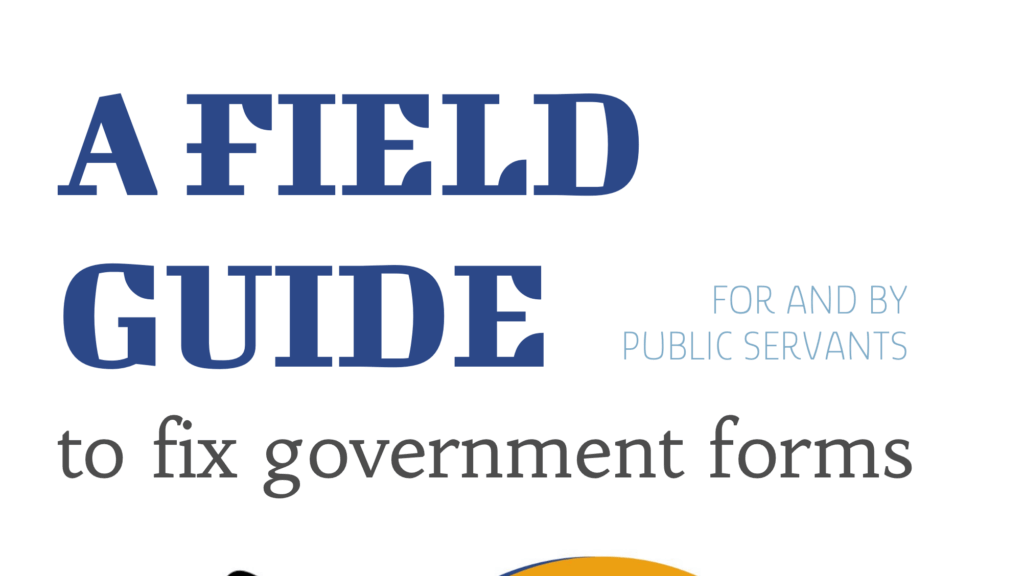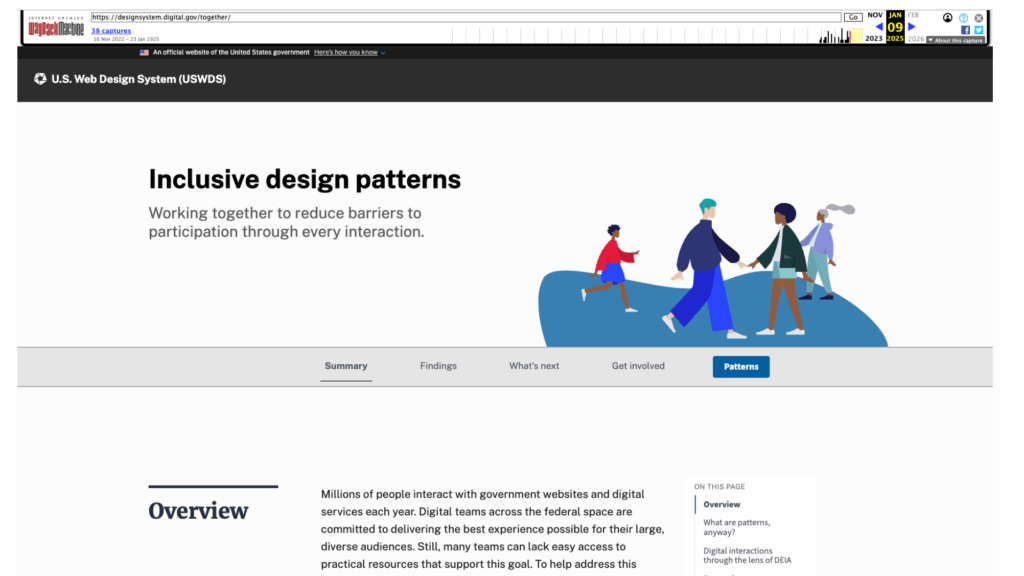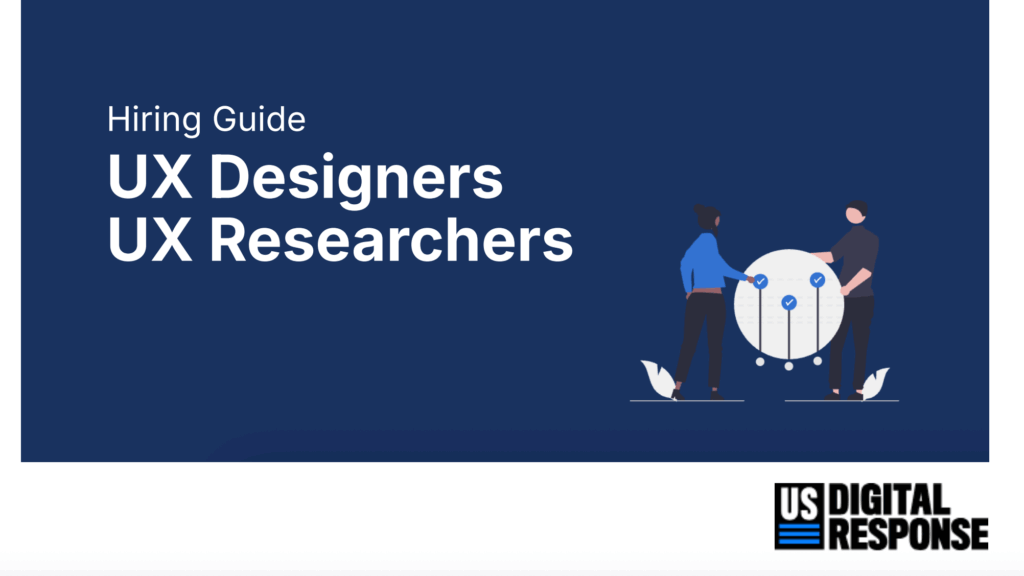FormFest 2024 Recap: Education Forms from Preschool to College
An event recap from one of FormFest 2024’s breakout sessions featuring speakers from South Carolina and the U.S. Department of Education.
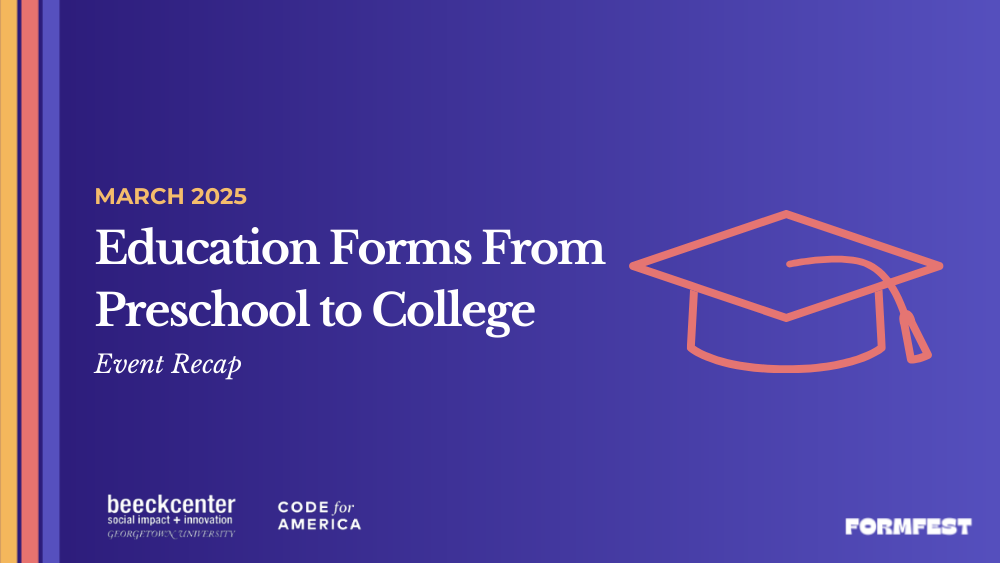
In this FormFest 2024 session, speakers highlighted two transformative government initiatives designed to simplify public benefits access. South Carolina’s First Five SC portal streamlines applications for early childhood services across multiple agencies into one user-friendly platform, while the U.S. Department of Education’s FAFSA (Free Application for Federal Student Aid) redesign aims to make federal student aid more accessible to millions of families nationwide. Both projects demonstrate how digital transformation can remove barriers and improve service delivery when centered around user needs.
Keeping it Simple: Integrated Public Early Childhood Applications that Families Need, Want, and Deserve
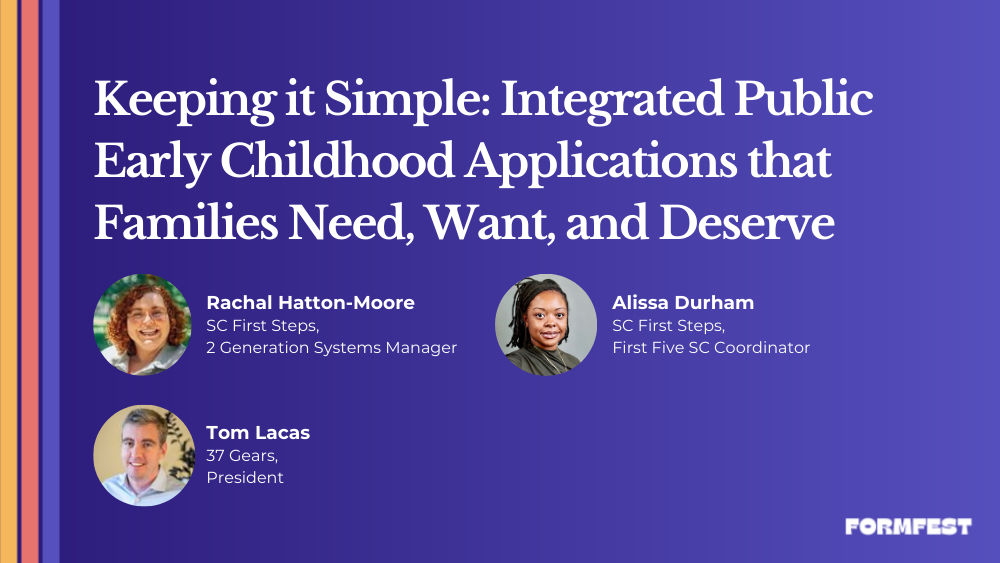
Speakers Rachal Hatton-Moore, Alisa Durham, and Tom Lacas, collaborated as coordinators at First Five South Carolina (First Five SC), a comprehensive digital portal designed to simplify access to early childhood programs and public services for families. Developed with preschool development grant funding from the U.S. Department of Health and Human Services’s Administration for Children and Families, the team built an integrated platform that connects families to over 60 publicly funded programs across multiple state agencies.
The team introduced a user-friendly eligibility screener with simple language and clear guidance, aimed at reducing the barriers families face in accessing services. Durham highlighted the importance of empowering families with clear, uplifting language and tools to help them navigate the system easily. The team then demonstrated how the platform worked, showing how parents could input personal information and find eligible programs quickly. After completing a quick questionnaire, parents received a personalized “prize screen” showing all programs they qualified for—with clear application options. The system automatically filled previously entered information across other applications, eliminating redundant form-filling. Additionally, the portal allowed document uploads to a secure vault, replacing paper-based processes that previously required multiple, in-person visits to complete applications. The platform’s success is evident in its usage patterns—62% of more than 155,000 annual visitors accessed the site outside normal government business hours. Additionally, the team outlined the system’s integration with state agencies through secure API connections to streamline data flow and reduce the administrative burden for families. Key points included the focus on family voice, ensuring services were both accessible and inclusive, and developing the platform with direct feedback from families to ensure its effectiveness. The session also emphasized the importance of offering services at times that suited families—particularly outside of normal government office hours—and improving accessibility for working parents or individuals with irregular schedules. The team concluded by sharing the positive impact of the platform, evidenced by families’ ability to access resources outside of business hours and reduce reliance on paper-based systems.
The FAFSA® Form: Reinvented after 40 Years
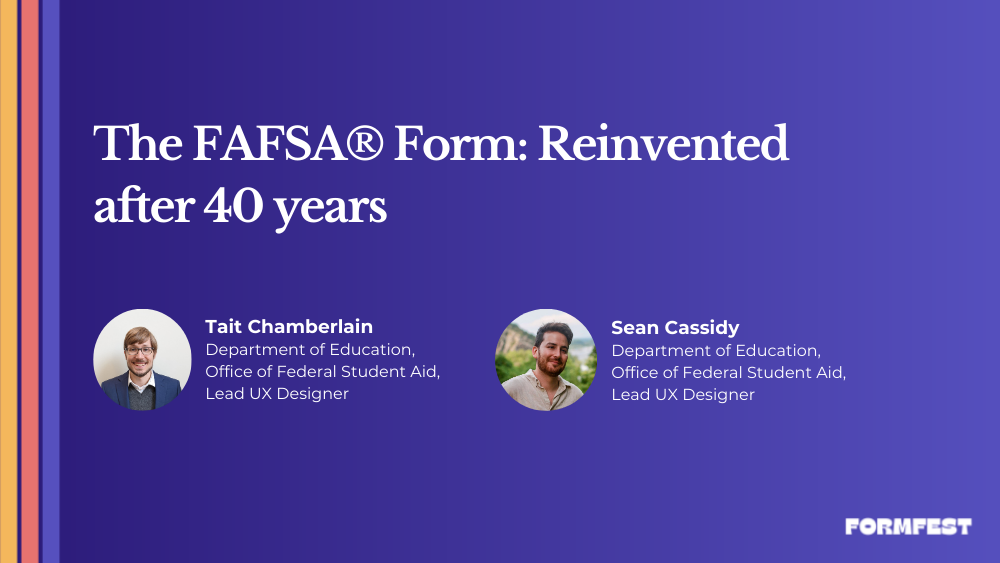
FAFSA, which has remained largely unchanged for nearly 40 years, is a critical tool helping distribute over $114 billion annually to more than 15 million students. Sean Cassidy and Tait Chamberlain presented their work on the comprehensive redesign of FAFSA. They detailed how the 2019 FUTURE Act and FAFSA Simplification Act mandated significant changes, including direct Internal Revenue Service (IRS) data imports, new family definitions, and streamlined eligibility calculations aimed at making the form shorter and easier to complete.
Chamberlain and Cassidy candidly discussed the challenges of their initial launch for the 2023-2024 cycle, which faced significant delays and technical issues that generated national news coverage. Learning from these setbacks, the team implemented a completely new approach for the 2024-2025 cycle. Key improvements included stabilizing the form’s technical foundation, developing a phased beta-testing strategy, centralizing UX efforts across multiple contractor teams, and conducting extensive, in-person research through “FAFSA Nights” in communities across the country. This hands-on testing revealed critical insights about real-world form usage that couldn’t be captured through traditional usability testing, such as observing students helping parents translate between English tax forms and Spanish FAFSA applications.
The presenters shared practical examples of how they used incremental improvements to address urgent problems even under severe technical constraints. For instance, a simple design change to the Social Security Number field reduced erroneous submissions by 70%, while modifications to text for confusing questions led to a 92% reduction in students accidentally disqualifying themselves from grant eligibility. Their revised approach culminated in a successful November 2021 launch that was completed 10 days ahead of schedule, with call center wait times under one minute and 96% user satisfaction ratings. The presenters emphasized three key takeaways: (1) test early and often with real users using real forms, (2) prioritize fixing technical foundations while continuing user research, and (3) never underestimate how small design improvements can significantly impact outcomes.
Key Takeaways
- Design for real lives, not ideal users. When families and students shape the system, the system finally works. Both teams emphasized the importance of designing with real users in mind. First Five SC incorporated family feedback directly into their platform development, while the FAFSA team conducted extensive beta testing across multiple locations, using actual students and parents. This approach led to more accessible and effective systems that better served their intended audiences.
- Great government services hide complexity, not capability. Both projects demonstrated how complex government services can be simplified through thoughtful integration. First Five SC unified access to multiple early childhood services through a single platform, while the FAFSA team worked to simplify a 40-year-old system while maintaining connections with multiple federal agencies. The focus was on reducing administrative burden for families while maintaining secure and effective data sharing between agencies.
- Accessibility isn’t a checkbox, it’s a commitment. True access means meeting people where and when they need help. Both teams recognized that accessibility means more than just user-friendly interfaces. First Five SC ensured their services were available outside normal business hours to accommodate working families, while the FAFSA team focused on clear language and progressive disclosure of information to help users better understand complex requirements. This comprehensive approach to accessibility helped ensure these services could reach and serve their intended audiences effectively.
See more from this session at FormFest 2024:
Watch the session recording and more from FormFest 2024.
Education Forms From Preschool to College
This session from FormFest 2024 features the South Carolina Early Childhood Advisory Council’s work developing a single portal to integrate applications for publicly funded programs and services, and the office of Federal Student Aid’s work on the FAFSA form.
Form Improvements to Increase Access to Childcare: A FormFest 2024 Profile
A profile on FormFest speaker Alissa Durham, featuring stories about her motivations for working on public sector form innovation.
Weathering the Financial Aid Firestorm: A FormFest 2024 Profile
A profile on FormFest speakers Tait Chamberlain and Sean Cassidy, featuring stories about their motivations for working on public sector form innovation.
About FormFest
FormFest is a free virtual event showcasing governments working to make services accessible to everyone through online forms. Discover best practices and tools that are shaping the future of form design and service delivery.
